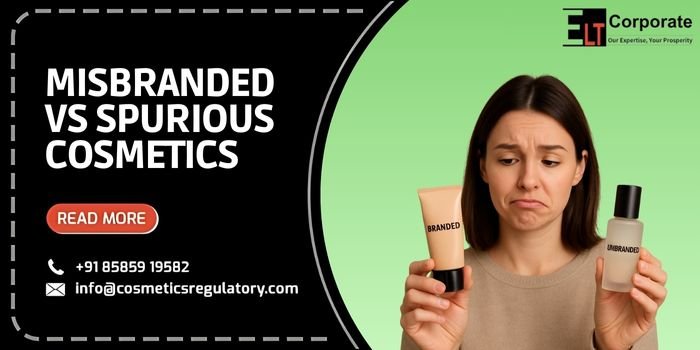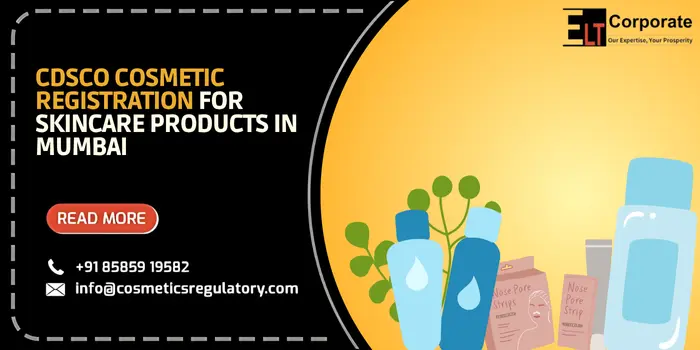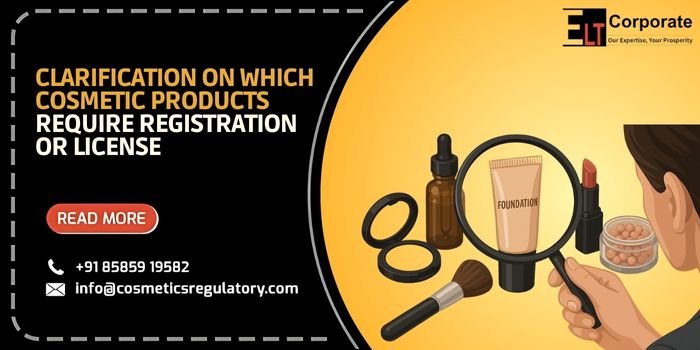India’s cosmetic markets, with both local and international brands competing for Consumer Trust, are growing rapidly. While this development is impure, it also attracts strict investigation from regulators. Under the Drugs and Cosmetics Act, 1940 and Cosmetic Rules, 2020, cosmetics can be classified as either misbranded or spurious if they do not meet legal standards.
Although these words are the same, they are very different in meaning, legal results and punishment. Missbranded cosmetics are products that fail in labelling or packaging compliance, often due to negligence, while spontaneous cosmetics are fake products that are deliberately passed off as real.
This guide suggests the difference between definitions, examples, punishments and compliance strategies between the wrong and spontaneous cosmetics that each business should know.
What Are Misbranded Cosmetics?
A misbranded cosmetic is wrongly misleading consumers, the label, pack or presentation. Unlike Sprius products, misbranding often results in oversight rather than intentional fraud.
Legal Definition
As per Section 17C of the Drugs & Cosmetics Act, 1940, a cosmetic is misbranded if:
- It is manufactured or packed under unhygienic conditions.
- Its container or design is misleading.
- Labelling does not comply with the Cosmetic Rules, 2020 or the legal Metro Rules.
- It creates wrong, exaggerated or misleading claims.
- It lacks compulsory information like manufacturer/importer details, batch number, expiration date or MRP.
Examples
- A cream claiming “100% permanent fairness” without proof.
- Shampoo labels are missing expiry dates or batch codes.
- A moisturiser branded “100% natural” but containing synthetic preservatives.
Health Impact
Misbranded cosmetics may mislead consumers and sometimes cause harm (e.g., expired products, undeclared allergens). Even if not unsafe, they damage consumer trust and expose businesses to regulatory action.
What Are Spurious Cosmetics?
A spurious cosmetic is a counterfeit or fake product designed to deceive customers into believing it is genuine. These cases involve deliberate fraud and carry much stricter penalties.
Legal Definition
According to Section 17D of the Drugs & Cosmetics Act, 1940, a cosmetic is spurious if:
- It is sold under another brand’s name without permission.
- It imitates a genuine cosmetic but is falsely marketed as authentic.
- Its ingredients are replaced with inferior or harmful substances.
- It uses the label, trademark or packaging design of another company to mislead buyers.
Examples
- Fake MAC lipsticks using copied packaging.
- Duplicate imported sheet masks falsely marketed as Korean.
- Counterfeit perfumes using luxury brand logos.
- Fake ayurvedic creams imitating popular herbal brands.
Health Impact
Severe cosmetics, including rashes, infections, and long-term damage due to toxic or contaminated ingredients, cause severe side effects. They harm consumer trust and brand reputation.
Key Differences Between Misbranded and Spurious Cosmetics
| Criteria | Misbranded Cosmetics | Spurious Cosmetics |
| Definition | Improper labelling, packaging, or misleading claims. | Counterfeit/fake products are sold as genuine. |
| Cause | Often due to negligence or oversight. | Deliberate fraud with intent to deceive. |
| Examples | Wrong MRP, missing expiry, false “100% natural” claim. | Counterfeit lipstick or fake perfumes with copied packaging. |
| Impact | Misleads consumers, may or may not harm health. | High health risk, brand reputation damage, and consumer fraud. |
| Penalty | Product seizure, fines, license suspension. | Heavier fines, imprisonment, and blacklisting. |
Penalties Under Indian Law
The Cosmetic Rules, 2020, empower CDSCO and State Licensing Authorities to take strict action against violators.
Misbranded Cosmetics
- Section 27A(i) of the Drugs & Cosmetics Act.
- Imprisonment up to 1 year, or
- Fine up to ₹20,000, or both.
- Product seizure and possible license suspension.
Spurious Cosmetics
- Section 27A of the Act (ii).
- Carry up to 3 years, and expanded up to 5 years for repeat offences.
- A fine of up to ₹ 50,000, and extended up to 1,00,000.
- Criminal proceedings and permanent blacklisting of the importer/manufacturer.
How Are These Enforced?
- Central Drugs Standard Control Organisation (CDSCO) → Oversees import registration of cosmetics (Form 42/43).
- State Licensing Authorities (SLA) → Issue manufacturing licences for Indian companies.
- Drug Inspector/Enforcement Team → Conduct inspections, samples and seizures.
- Consumer complaints → trigger the investigation into wrong or spontaneous products.
Global Comparison
- EU (Regulation EC 1223/2009): Misbranded – misleading claims; Spurious = counterfeit. All cosmetics must be notified in the CPNP before sale.
- USA (FDA): Misbranding – improper labels/claims; Spurious = counterfeit. FDA does not pre-approve cosmetics, but it can seize unsafe or misbranded items.
- India: Similar in principle, but penalties are stricter, including imprisonment and fines under the Drugs & Cosmetics Act.
How Businesses Can Stay Compliant
- Ensure label accuracy → include mandatory details (MRP, batch no., Expiry, importer details).
- Avoid false claims → Explain words like “permanent treatment” or “100% guaranteed”.
- Verify the supply chain → Work only with licenses and authorised vendors.
- Get CDSCO registration → Imported cosmetics require a Form 43 registration certificate
- Conduct an internal audit → Regular compliance stops the penalty and protects the reputation.
FAQs
Is a wrong MRP considered misbranding?
Yes. Incorrect or missing MRP is misbranding under the Act.
Are counterfeit cosmetics always spurious?
Yes, all fake products sold as another brand are classified as spurious.
Can misbranded cosmetics still be safe to use?
Possibly, but they remain illegal until corrected.
Do both misbranded and spurious cosmetics require CDSCO registration?
Yes, but spurious cosmetics are illegal and cannot be registered.
Who regulates cosmetics in India?
The CDSCO regulates imports, while State Licensing Authorities oversee local manufacturers.
Conclusion
It is important for every cosmetic importer, manufacturer, and distributor in India to understand the difference between wrong and spurious cosmetics. Missbranding often arises from labelling or packaging errors, while spontaneous cosmetics deliberately involve forgery. Both attract strict punishment, including seizures, fines, license cancellation, and imprisonment.



